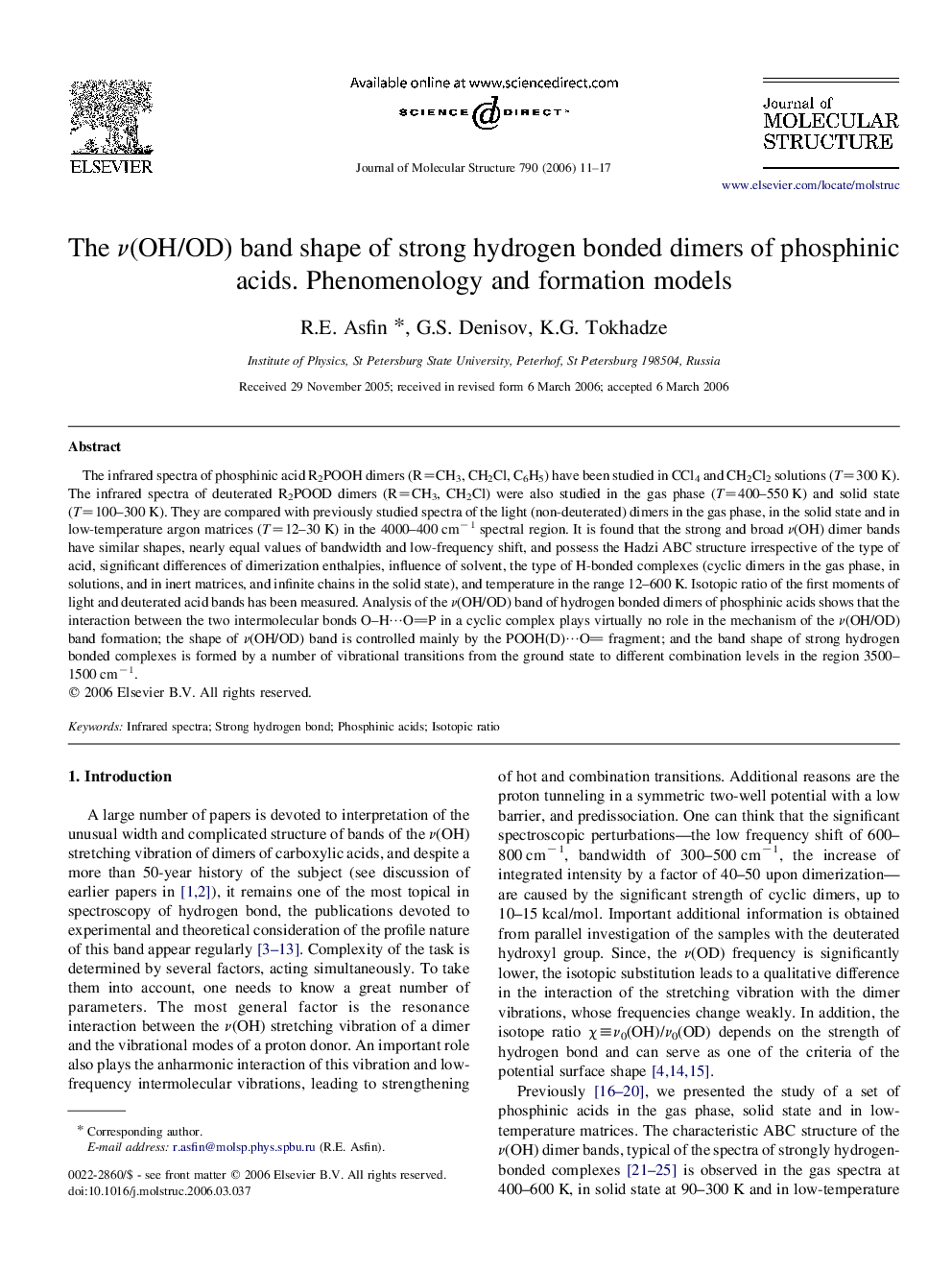| Article ID | Journal | Published Year | Pages | File Type |
|---|---|---|---|---|
| 1404674 | Journal of Molecular Structure | 2006 | 7 Pages |
The infrared spectra of phosphinic acid R2POOH dimers (R=CH3, CH2Cl, C6H5) have been studied in CCl4 and CH2Cl2 solutions (T=300 K). The infrared spectra of deuterated R2POOD dimers (R=CH3, CH2Cl) were also studied in the gas phase (T=400–550 K) and solid state (T=100–300 K). They are compared with previously studied spectra of the light (non-deuterated) dimers in the gas phase, in the solid state and in low-temperature argon matrices (T=12–30 K) in the 4000–400 cm−1 spectral region. It is found that the strong and broad ν(OH) dimer bands have similar shapes, nearly equal values of bandwidth and low-frequency shift, and possess the Hadzi ABC structure irrespective of the type of acid, significant differences of dimerization enthalpies, influence of solvent, the type of H-bonded complexes (cyclic dimers in the gas phase, in solutions, and in inert matrices, and infinite chains in the solid state), and temperature in the range 12–600 K. Isotopic ratio of the first moments of light and deuterated acid bands has been measured. Analysis of the ν(OH/OD) band of hydrogen bonded dimers of phosphinic acids shows that the interaction between the two intermolecular bonds O–H⋯OP in a cyclic complex plays virtually no role in the mechanism of the ν(OH/OD) band formation; the shape of ν(OH/OD) band is controlled mainly by the POOH(D)⋯O fragment; and the band shape of strong hydrogen bonded complexes is formed by a number of vibrational transitions from the ground state to different combination levels in the region 3500–1500 cm−1.
